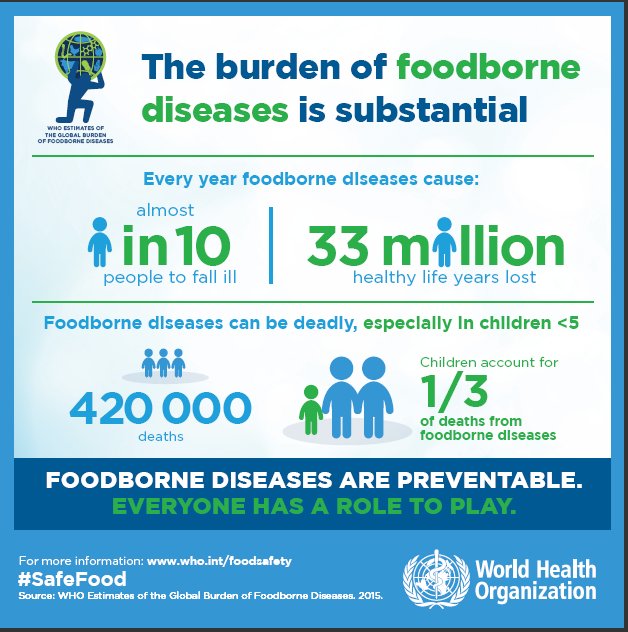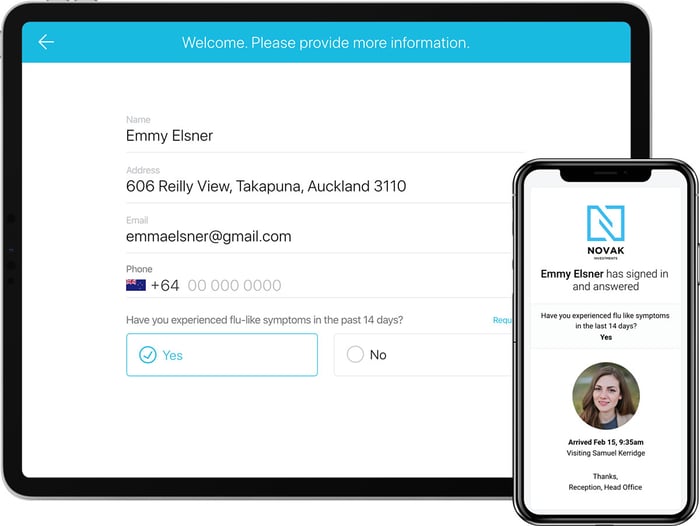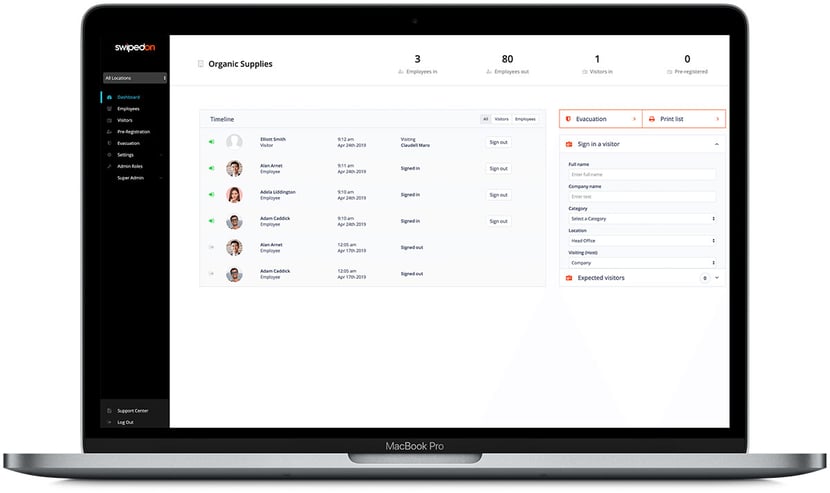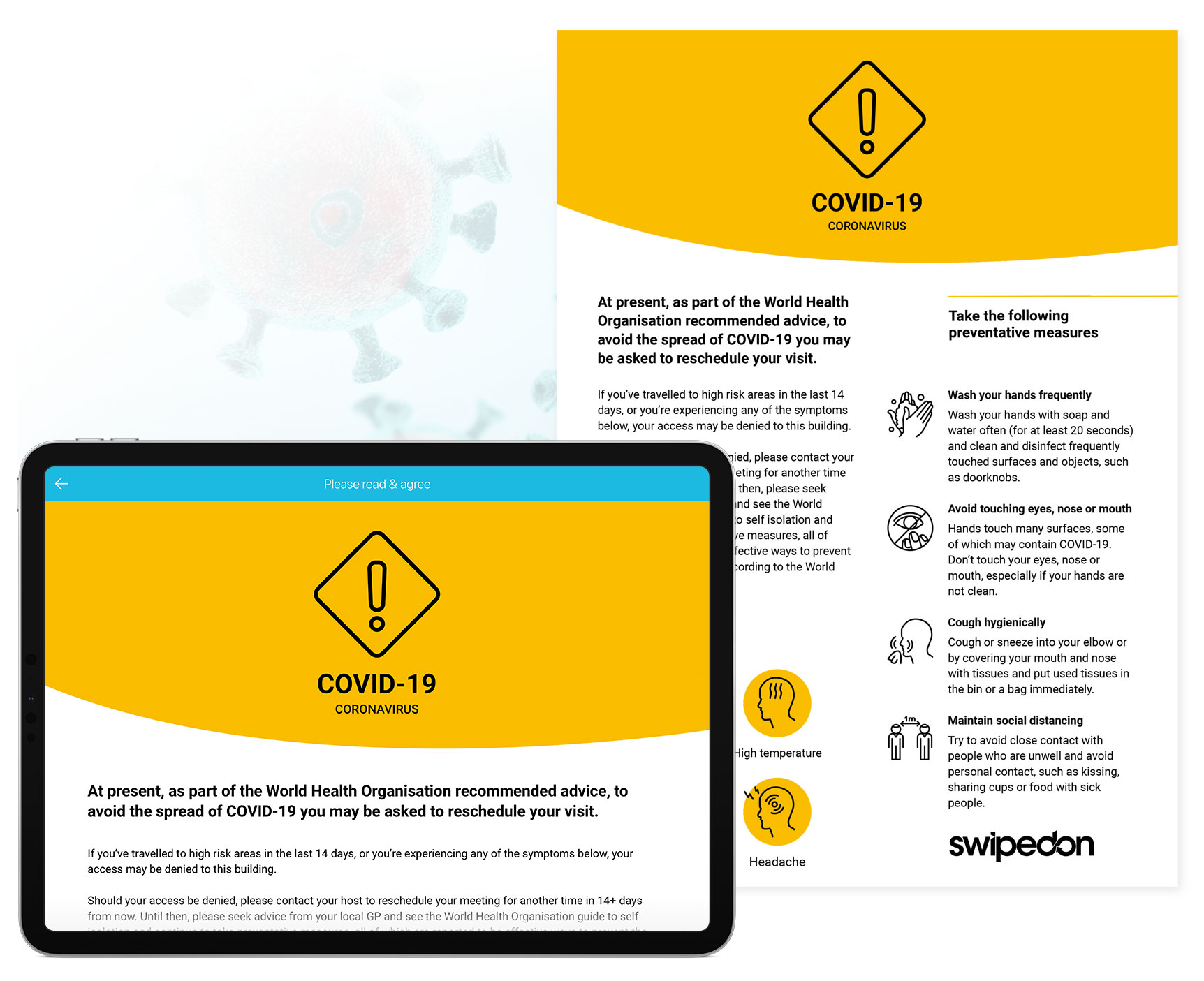How Visitor Management Improves Safety & Security for Food Facilities

As a food manufacturer, it’s no longer enough to convince your consumers that your products are delicious. First and foremost, you have to convince them that your products are safe. This was echoed at the 2019 Global Food Safety Conference, which revealed that food safety remains the top priority among 90% of food manufacturers. This is in line with the recent WHO findings that 10% of the global population will fall ill to food-borne diseases, which kill 33 million people every year.
Furthermore, it’s more important than ever with the current COVID-19 global pandemic, to protect your organization, suppliers, and customers from any potential contamination of food, food-contact surfaces, and packaging.

Foodborne illnesses are a serious global health problem and food manufacturers are prioritizing food safety as a response (Image Source).
Measures Against Deliberate Food Adulteration
Stricter regulations are also being put in place to uphold the highest standards of food safety. For instance, the FDA Food Safety Modernization Act (FSMA) is aimed at preventing intentional food adulteration, which may threaten food safety and cause economic disruption by interrupting food supplies. According to the FSMA, food facilities are “required to prepare and implement a food defence plan. This written plan must identify vulnerabilities and actionable process steps, mitigation strategies, and procedures for food defence monitoring, corrective actions, and verification.”
With this in mind, it's important that your food facility works towards an effective food defence plan. While most food manufacturers are working on mapping out comprehensive mitigation strategies to reduce food-specific hazards, the FSMA requires food manufacturers to think of broader risk-reducing strategies. In this process, one simple tool is often overlooked: a digital visitor management system.
While already a staple in most modern offices, the role of a modern visitor management solution in boosting the security of food facilities is rarely talked about. Here are the key ways a visitor management system can improve the safety and security of your food manufacturing facility:
1. Access Control for Employed and Non-Employed Personnel
A food manufacturing factory is arguably one of the busiest facilities in any industry. The production of even the simplest food items involves a multitude of steps and moving parts, which equates to a high number of individuals entering and exiting the facility.
Everyone who has access to your facility is a possible culprit for food adulteration. This may sound overly precautious, but it’s better to err on the side of caution and have a healthy dose of suspicion than risk contamination.
Where does a digital visitor management system fit in? Access control is one of the pillars of any effective security and risk mitigation strategy. You may not be thinking of upgrading your paper visitor’s logbook or old visitor management system because it accomplishes the most basic goal of logging the names of your visitors. However, a digital visitor management system can and should do much more.
A digital visitor management system offers increased access control by:
- Ensuring that all employed and non-employed personnel are accurately documented using a system that is nearly foolproof
- Preventing unauthorized access by requiring all visitors to be pre-registered in your visitor management system
- Issuing easily printable ID badges to allow employed personnel to identify visitors and report unusual behaviours to designated safety officers
- Screening visitors to determine whether they pose a risk to your business and employees. You can do this with a simple yes/no question via visitor screening as demonstrated in the image below.
 These access control measures not only apply to non-employed entities in your food plant. Access control best practices dictate that all employees will not have equal access to the different areas of your premises.
These access control measures not only apply to non-employed entities in your food plant. Access control best practices dictate that all employees will not have equal access to the different areas of your premises.
The golden rule: lesser access to your production line equals lower risk for intentional food adulteration.
2. Stricter Delivery Protocols
Your food manufacturing facility’s delivery dock is a portal where ingredients and other supplies are dropped off and received. However, when not handled properly, it can also be a portal for contaminated and adulterated items that can infiltrate your facility. It’s also a vulnerable area where unauthorized access can happen. As one Food Business News article cited: “If you don’t have someone checking deliveries, you’ll end up having delivery drivers or service techs just walking into the building through the shipping and receiving dock.”
Here’s how a digital visitor management system can help.
Since a modern digital VMS only requires a portable device such as an iPad and an internet connection to function, it’s easy to set up and implement. Likewise, since all visitor information is stored in a central database, tracing possible sources in the event of contamination will be relatively easier.
Another way that a digital visitor management system can help create a stricter delivery protocol is through notifications sent to your employees when a shipment has arrived at your delivery dock.
 Physically inspecting supplies and ingredients and having additional protocols (rapid contaminant testing) to check for safety is a big leap toward preventing food adulteration and contamination.
Physically inspecting supplies and ingredients and having additional protocols (rapid contaminant testing) to check for safety is a big leap toward preventing food adulteration and contamination.
3. Paper-Less and Efficient Compliance with the Government’s Record keeping Requirements
One of the obligations food manufacturers have under the FSMA is record keeping, with some companies even required to have these records available for at least two years for audit. Record keeping as part of a food safety plan involves the following areas, among others:
- Hazard analysis
- Preventive controls
- Allergen preventive controls
- Sanitation preventive measures
- Monitoring procedures
The FSMA doesn’t specifically oblige food manufacturers to have a comprehensive visitor management system in place for the sake of record keeping. However, having one allows you to be a step ahead because it’s relevant to the four key record keeping areas mentioned above. If and when the FDA decides to do an audit of your food manufacturing plant, a digital log of your visitors and employees helps demonstrate that you are doing your due diligence when it comes to the following:
- Identifying potentially hazardous personnel who may gain entry to your food facility
- An effective first-level of defence against intentional food adulteration
- Having visitor agreements in place to ensure a high level of sanitation and prevention of allergen contamination
- An effective and easily accessible record of all internal and external personnel who had access to your food facility during specific timeframes
Doing this using the outdated pen-and-paper method is cumbersome, and not earth-friendly. Paper clutter in a food manufacturing facility may also be a hygiene issue. Furthermore, keeping paper files for two years requires tedious file warehousing.

On the flip side, a digital VMS allows you to do all these without a single sheet of paper. Data is protected and secured. Likewise, records are easily retrieved during audits.
A digital VMS can also serve as a contact tracing tool in your workplace. During the COVID-19 crisis, if an infected individual has had contact with your food facility, you can effectively undergo contact tracing procedures and work with health and government officials since the VMS contains accurate records of the date, name, and time-stamp of every visitor entering the facility.
4. Gaining Consent to Your Sanitation, Hygiene, and Anti-Adulteration Agreements
Lastly, a digital visitor management system allows you or your plant manager to effectively disseminate information about your sanitation, hygiene, and anti-adulteration requirements while employees or visitors are inside your facility. This includes but is not limited to:
- Honest disclosure of your visitors’ health conditions during the time of their visit to prevent contamination
- Full understanding of restricted areas that they are not allowed to access
- Wearing of Personal Protective Equipment (PPE) at all times during the entirety of their visit
- Sanitation guidelines such as removal of personal effect items and washing of hands when entering food production areas
All these agreements and any other information can be loaded into a digital visitor management platform and set as mandatory elements in your visitor sign-in process. Guests can easily affix their digital signature to these agreements, which makes them liable to follow your safety rules while they’re inside your premises. In response to the COVID-19 pandemic, we've ensured that all SwipedOn customers have space for additional PDF pages to facilitate a digital agreement that covers preventative measures to take in your business. We've also created a free download for all customers both for the iPad and a poster for the wall.
Is a Visitor Management System the Missing Ingredient in Your Food Facility’s Security?
Ensuring that the food products that come out of your facilities are safe isn’t just a matter of compliance. It’s of utmost importance to uphold public health. While a full review of your facility’s safety and security plans may be necessary, a low hanging important fruit to be considered is utilizing a visitor management solution for all the benefits discussed above.
What visitor management system are you currently using in your food facility? Is it providing you with the safeguards that you need? If you want to know more about how a digital VMS can help increase your food facility’s security, get in touch with us for a 14-day free trial.




-929560-edited-003563-edited.jpg)





 Germany - Deutsch
Germany - Deutsch